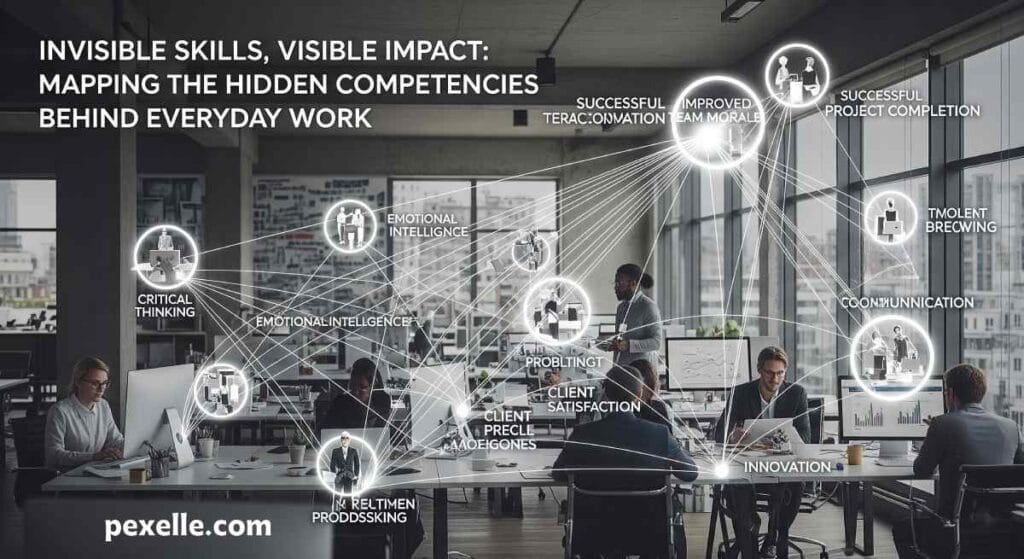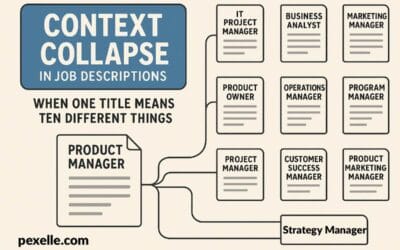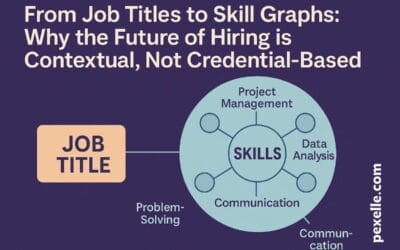Invisible Skills, Visible Impact: Mapping the Hidden Competencies Behind Everyday Work

Introduction: The Skills You Can’t See
In today’s job market, hiring managers, recruiters, and even employees themselves often overlook a crucial part of performance: the invisible skills. These are the subtle competencies—like problem-framing, active listening, contextual awareness, and adaptability—that rarely appear in job descriptions or résumés. While hard skills are easy to measure and certify, hidden competencies quietly drive productivity, collaboration, and innovation behind the scenes. Yet because they are not systematically captured or mapped, their value often remains underestimated.
What Makes a Skill “Invisible”?
Invisible skills are not simply “soft skills.” Instead, they emerge as context-dependent abilities that people apply without consciously naming them. For example:
- A project manager who anticipates conflicts before they arise.
- A developer who translates technical complexity into clear business terms.
- A customer service agent who calms frustration with emotional intelligence.
These skills do not fit neatly into checklists, certifications, or keyword-based hiring systems. They are tacit, built through lived experience and shaped by environments. And because they are rarely made explicit, organizations fail to leverage them strategically.
Why Hidden Competencies Matter for Organizations
When invisible skills remain unrecognized, organizations face risks: misaligned talent allocation, missed opportunities for leadership growth, and reduced resilience in times of change. Conversely, when these competencies are identified and mapped, the payoff is significant:
- Better workforce planning – Employees can be matched to tasks that align not only with formal qualifications but also with their hidden strengths.
- Increased retention – People feel valued when their unique, less tangible contributions are acknowledged.
- Stronger innovation capacity – Teams that combine technical expertise with hidden competencies like creative reframing or intercultural fluency can outperform purely technical groups.
In short, invisible skills provide the connective tissue that enables technical expertise to translate into business results.
Making the Invisible Visible: The Role of AI and Skill Mapping
The rise of AI-driven talent intelligence platforms—such as Pexelle—opens the door to making these competencies visible. By analyzing job data, contextual signals, and patterns of collaboration, advanced models can infer hidden competencies that traditional CV parsing would never capture. For instance:
- Natural language processing can detect how employees describe their work, revealing problem-solving or communication styles.
- Graph-based skill mapping can highlight adjacent skills that often co-occur, hinting at tacit competencies.
- Continuous feedback loops from managers and peers can enrich datasets, giving structure to otherwise qualitative traits.
This approach does not replace human judgment—it amplifies it by surfacing dimensions of talent that were previously invisible.
The Future: Designing Workflows Around Hidden Strengths
As organizations embrace skill-based hiring and learning models, mapping hidden competencies will become a competitive advantage. The future of work is not only about certifying who has Python, project management, or financial modeling skills. It is also about understanding who excels at cross-cultural mediation, who can reframe ambiguous problems, and who demonstrates resilience under pressure.
By integrating hidden competencies into workforce planning, companies will shift from viewing talent as a static list of credentials to a dynamic ecosystem of human capabilities. And that shift may determine not only how individuals thrive in their careers but also how organizations sustain innovation in an unpredictable economy.
Source : Medium.com




